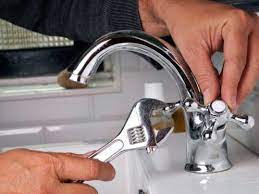Fixing a leaky faucet is a common household maintenance task that, when done correctly, can save you money on your water bill and prevent further damage. In this guide, I’ll walk you through the steps to fix a leaky faucet, complete with relevant examples and detailed instructions.
Tools and Materials You’ll Need
1. Adjustable wrench
2. Screwdriver
3. Replacement parts (O-rings, washers, or cartridges, depending on the faucet type)
4. Plumber’s tape (Teflon tape)
5. Towel or rag
Step 1: Turn Off the Water Supply
Begin by locating the water shut-off valves under the sink. Turn them clockwise to shut off the hot and cold water supply. If you can’t find these valves, you may need to turn off the main water supply to your home.
Example: Imagine your faucet is leaking like a dripping tap. You don’t want to waste water, so it’s crucial to stop the flow before proceeding.
Step 2: Remove the Faucet Handle
Use a screwdriver to remove the handle. There may be a decorative cap that conceals a screw. Once you remove the screw, carefully take off the handle. Examine the stem beneath for any damage or corrosion.
Read Also: Guide to Recycling of Wastes and Advantages of Recycling
Step 3: Access the Cartridge or Valve Stem
Depending on your faucet type, you may find a cartridge or a valve stem. Use an adjustable wrench to carefully loosen and remove the retaining nut or ring. Take note of the orientation of any components you remove.
Step 4: Replace Seals, O-Rings, or Washers
Examine the removed components for signs of wear or damage. Replace any seals, O-rings, or washers as necessary. Lubricate them with plumber’s grease to ensure a proper seal.
Step 5: Reassemble and Test
Carefully reassemble the faucet components in the reverse order you disassembled them. Tighten the retaining nut or ring securely. Turn the water supply back on and slowly open the faucet to test for leaks.
Step 6: Check for Leaks
Keep a close eye on the faucet for any signs of leaks over the next few hours. If you notice any leaks, tighten the components further or consider replacing the cartridge or valve stem.
Step 7: Dealing with a Ceramic Disk Faucet (Alternative to Step 4)
For ceramic disk faucets, you won’t find traditional rubber washers. Instead, they have ceramic disks that may become scratched or damaged. If you have this type of faucet, inspect the ceramic disks and replace them if necessary.
Step 8: Fixing a Ball-Type Faucet (Alternative to Step 4)
Ball-type faucets have multiple parts, including the cam and rubber seats and springs. If you have this type of faucet, check these parts for wear and tear. Replacing them can often solve leaks in ball-type faucets.
Step 9: If All Else Fails, Replace the Faucet
In some cases, especially if your faucet is very old or severely damaged, repairing it may not be feasible. In such instances, it’s best to replace the entire faucet. When selecting a new faucet, consider style, durability, and water-saving features.
Step 10: Maintenance for Long-Term Leak Prevention
After successfully fixing your leaky faucet, it’s essential to perform routine maintenance. Regularly clean the aerator to prevent clogs, and periodically check for loose components or signs of wear to address issues before they lead to leaks.
In conclusion, fixing a leaky faucet is a valuable skill that can save you money and conserve water. With attention to detail and the right tools, you can tackle this common household issue. Remember, safety first – always turn off the water supply before starting any work.
Read Also: 15 Ways to Grow Your Business Fast
